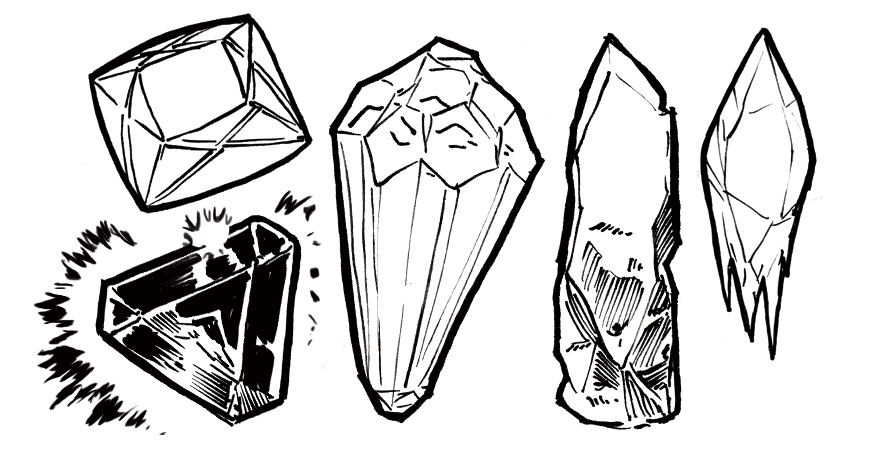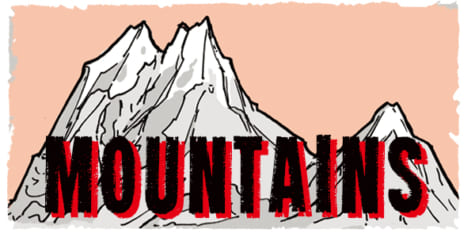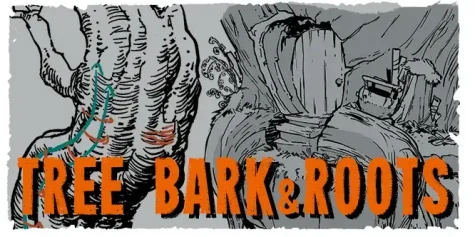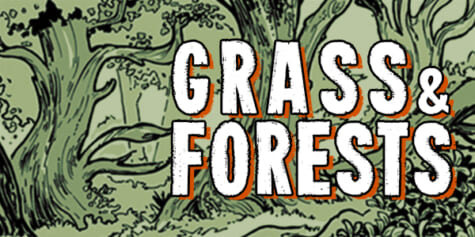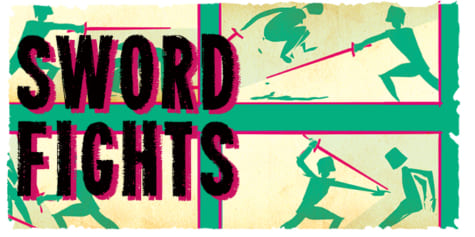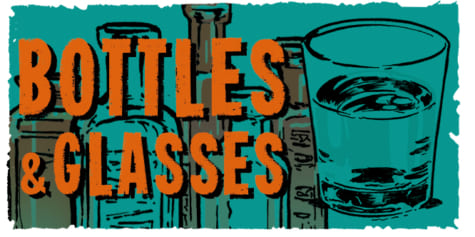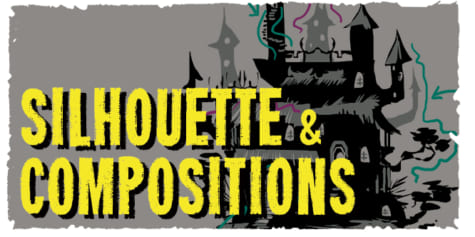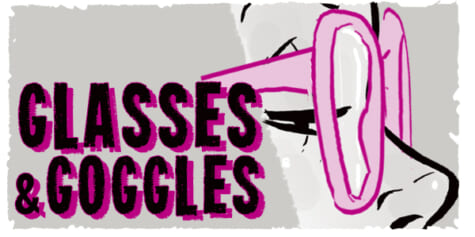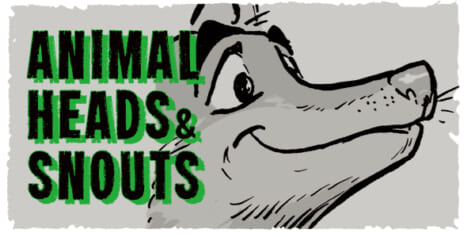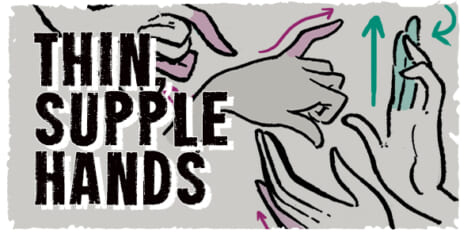How to draw Gems, Crystals, and Gold
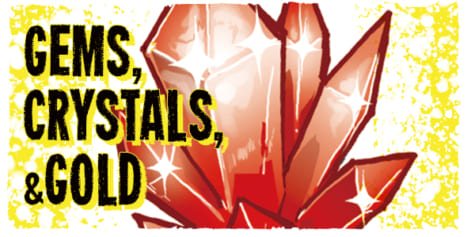
Learn how to draw a gemstone's geometric cut patterns, the natural form of the crystals, & massive, shining gold with this tutorial by The Etherington Brothers.
Learn how you can draw… or learn how to THINK when you DRAW with the Etherington Brothers!
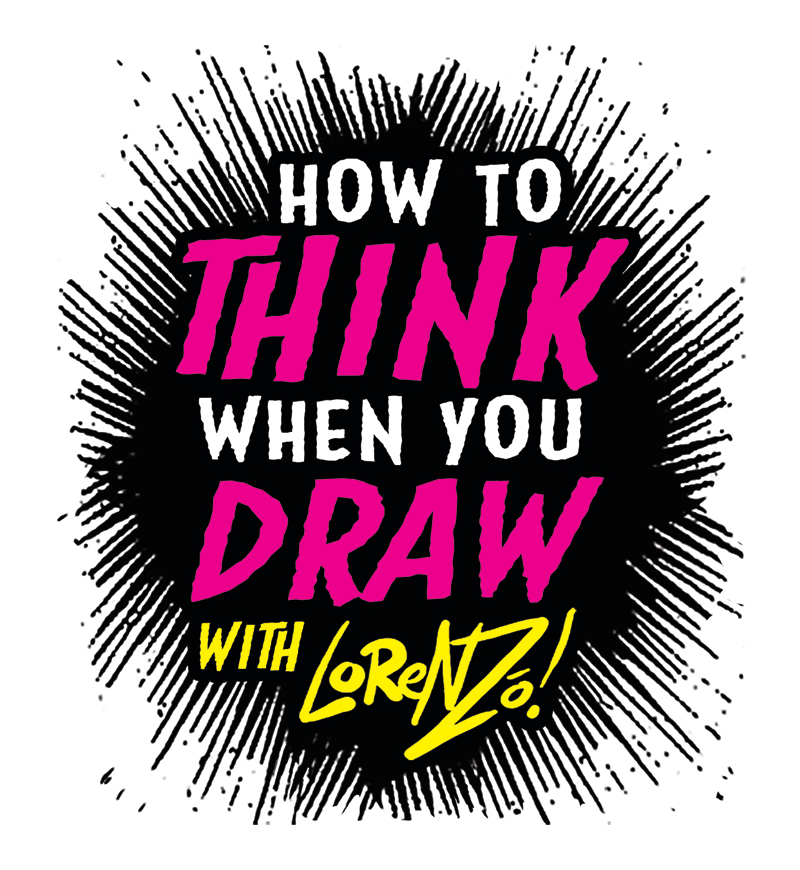
Gems and Crystals
Gems and Crystals are often characterized by having flat, geometric surface patterns.
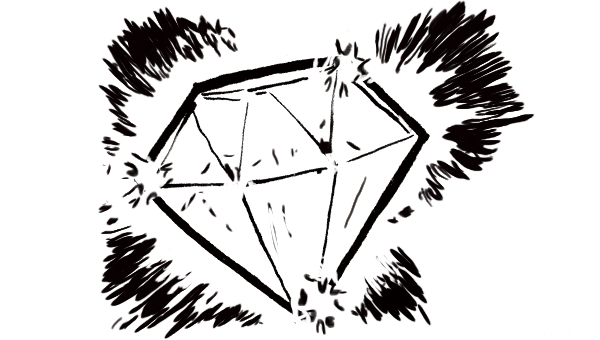
The surfaces of cut stones are divided up by edges which join the corners of the key shapes within the design.
Simple or complex, this process always works!
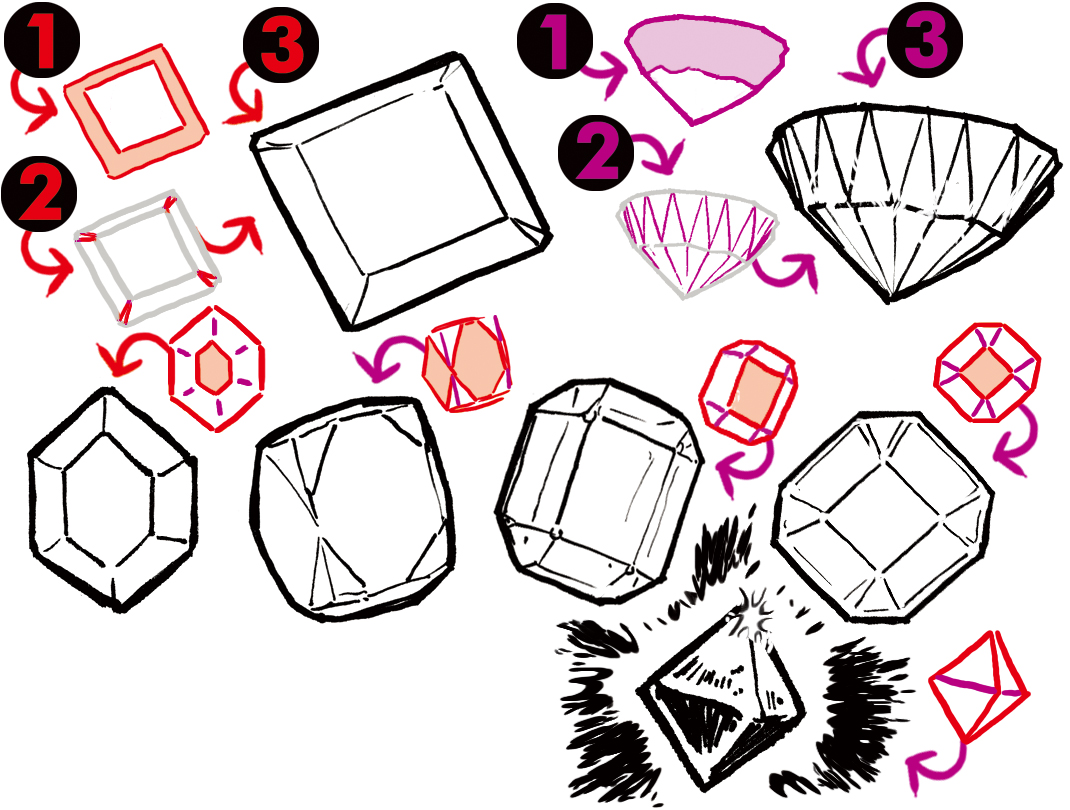
Here’s how to make a more irregular, rough-hewn gem:
- Draw a shape with multiple straight sides of different lengths.
- Draw a smaller shape with less sides, and place it off-center.
- Add a few smaller shapes.
- Connect to corners on outer shape.
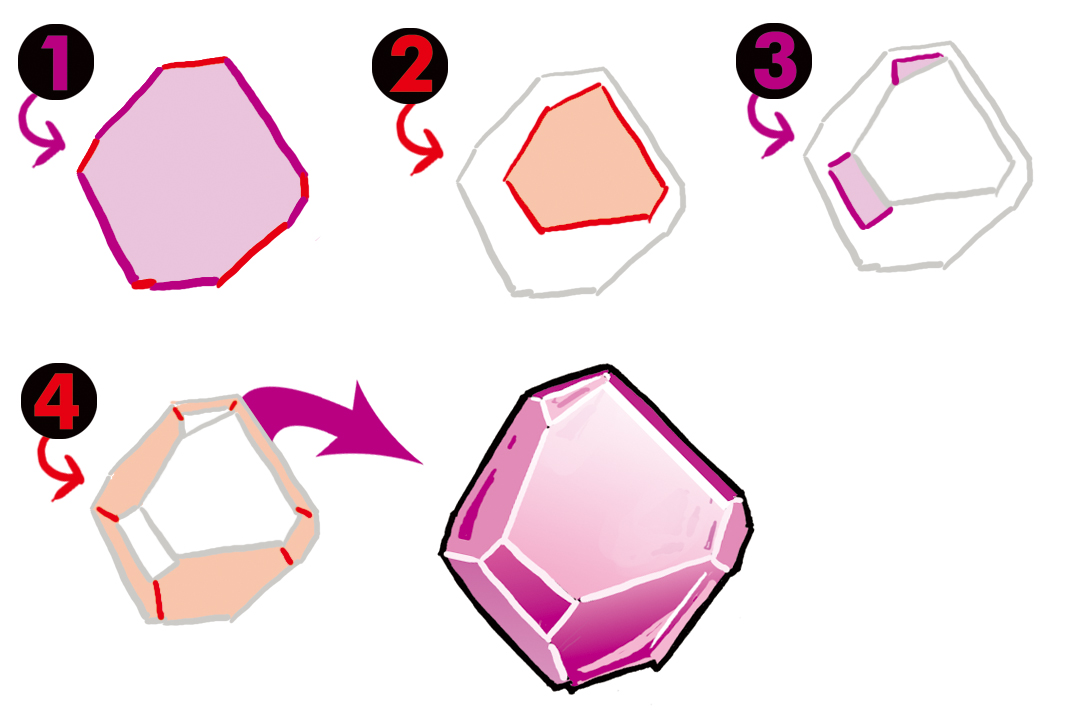
For a raw mineral look, add more internal shapes!
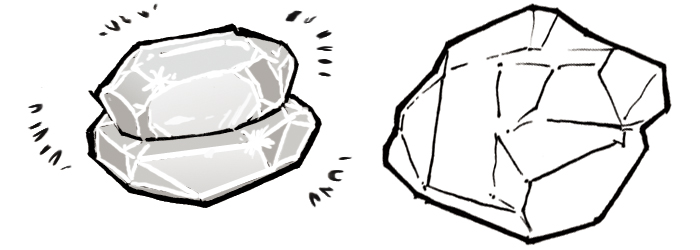
Some crystals naturally form in columns.
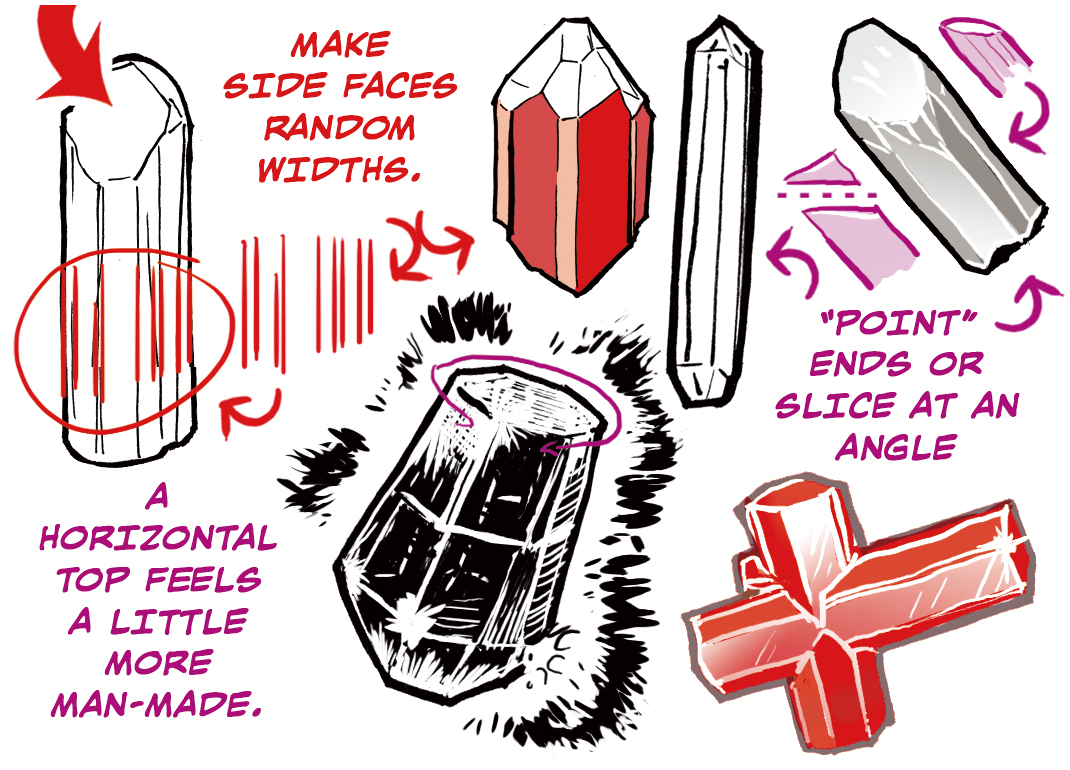
The coloring in many gems gives them reduced transparency. This makes capturing their translucent nature a little different from that of glass.
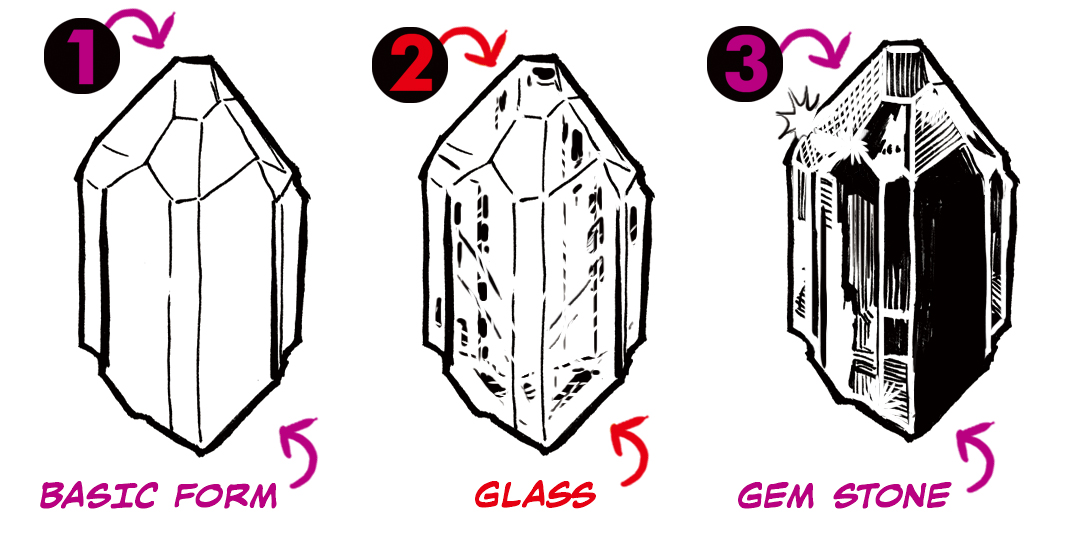
Disperse tones: roughly 1/3 shadow 1/3 mid-tone 1/3 light.
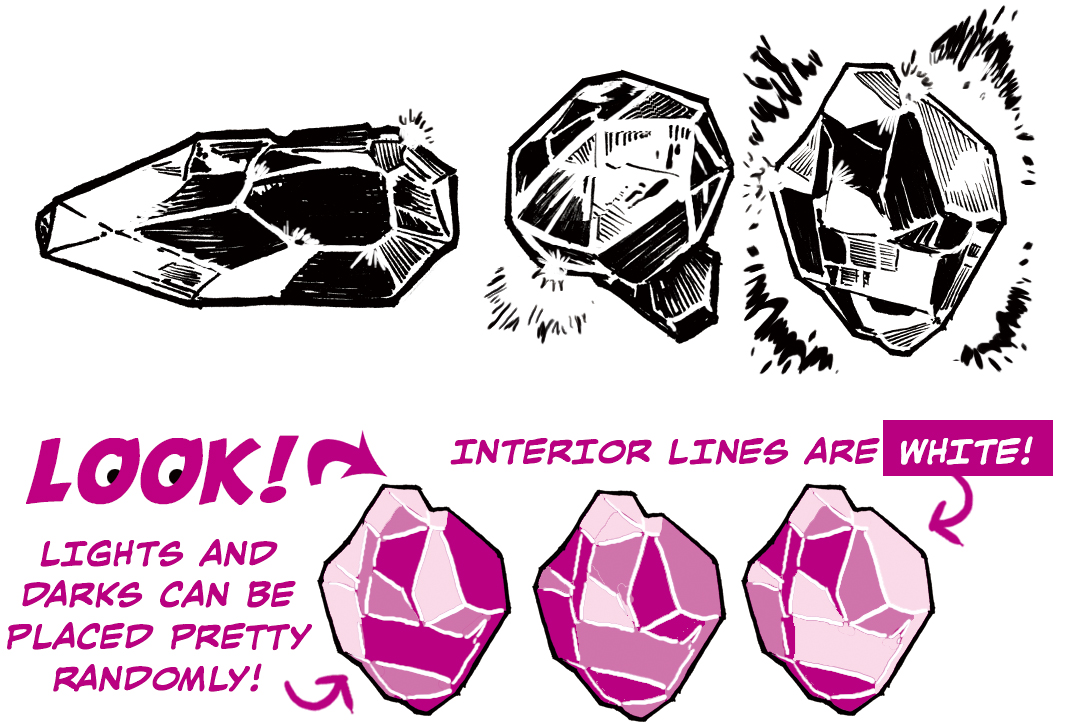
Crystals often appear in groups of columns or shard-like arrangements.
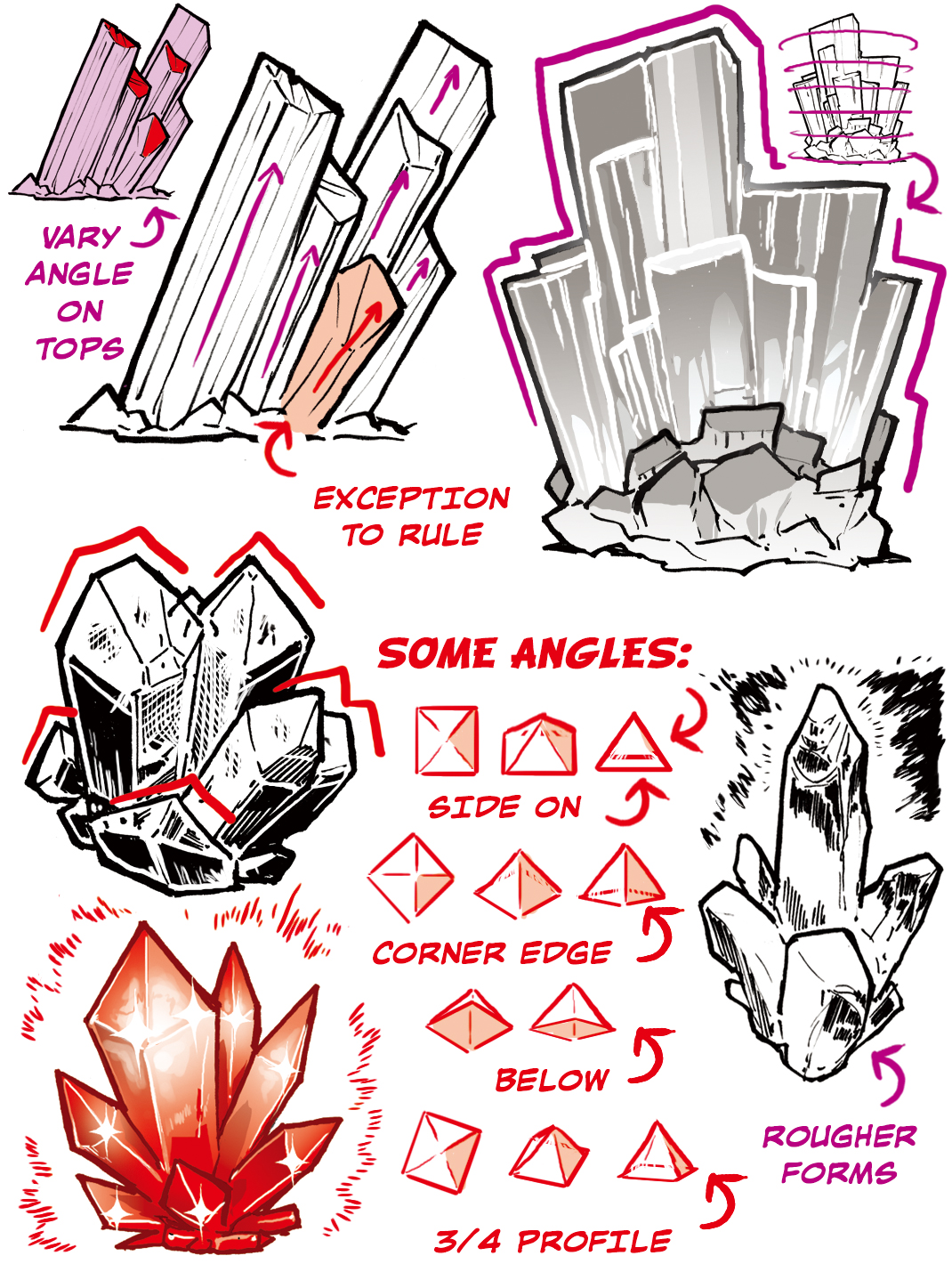
Here are a few more shapes to try:
Gold
Gold produces both high shine and deep, dark reflected shadows. But before we get to the polished stuff, let’s begin with gold ore…
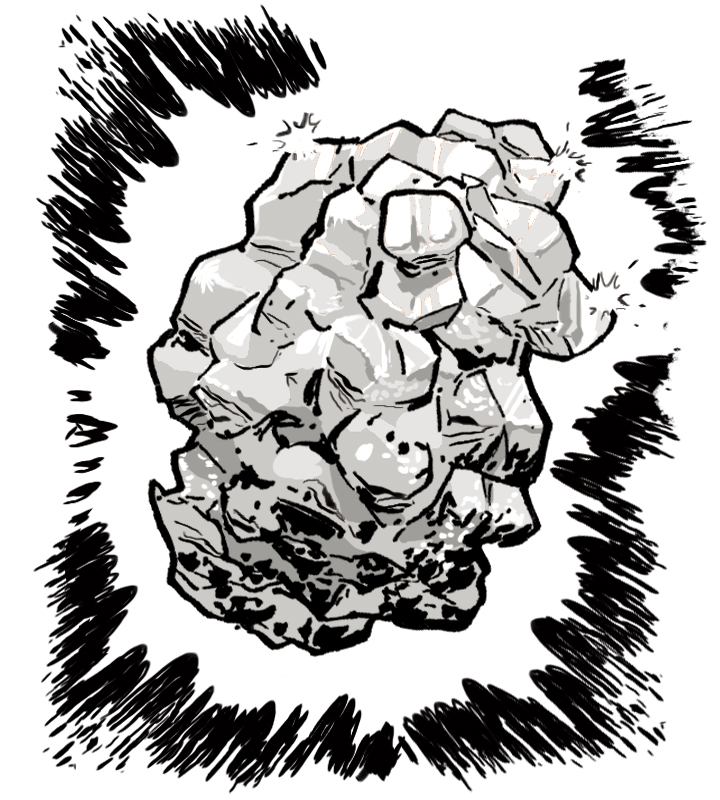
In its unrefined form, the surface sometimes shows many thin layers.

Sketch random flat surfaces at different angles, and connect.
- Random surfaces.
- Join with random edges.
- Use shadow to establish forms.
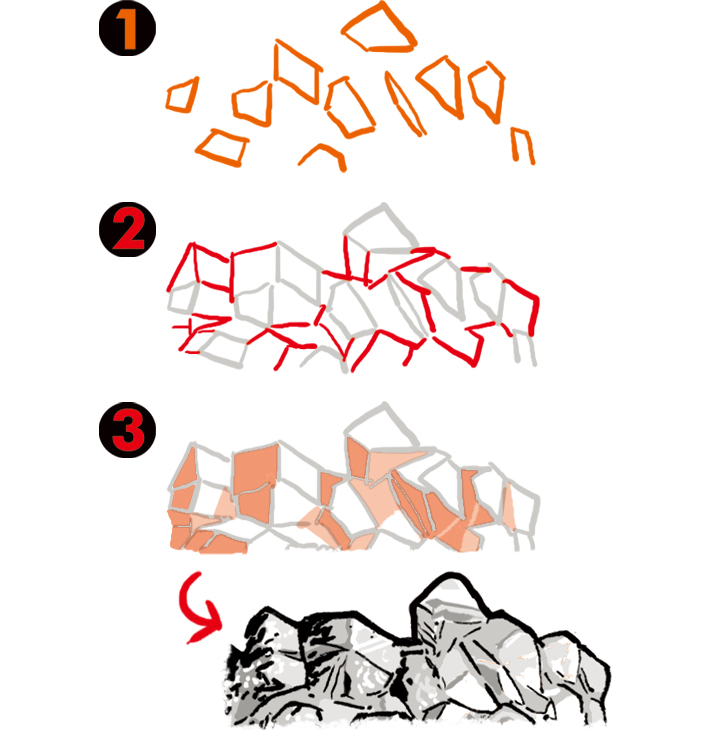
When drawing gold bars, think about how the bars themselves reflect each other.
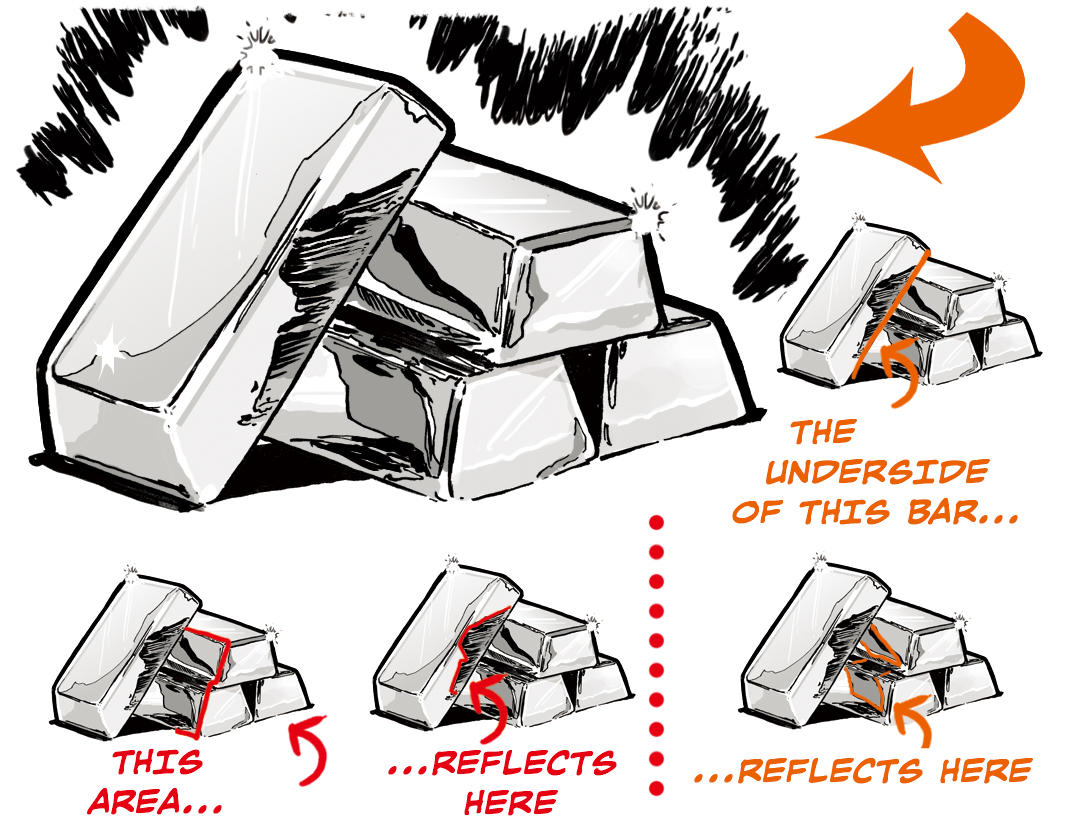
The surface is rarely perfectly flat, so reflections tend to ripple.

If we pull back to draw a larger group of bars, simplify reflections, but remember to reflect dark shadows.
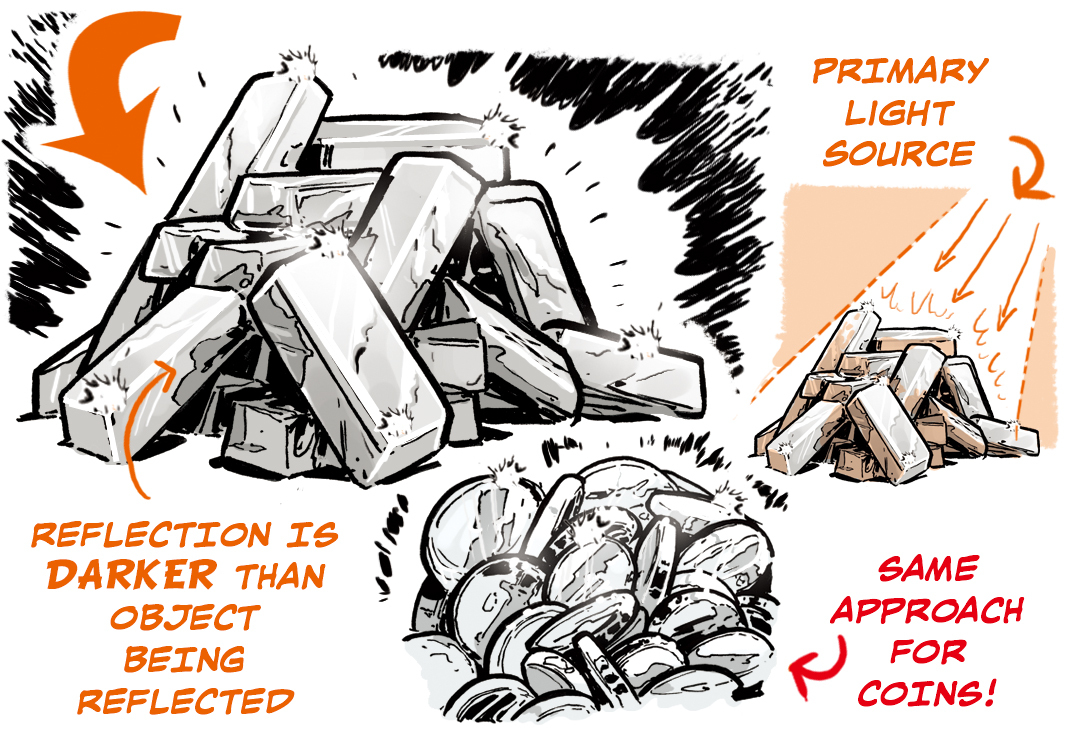
With more complex gold forms, reflections and highlights will be pulled along curved edges.
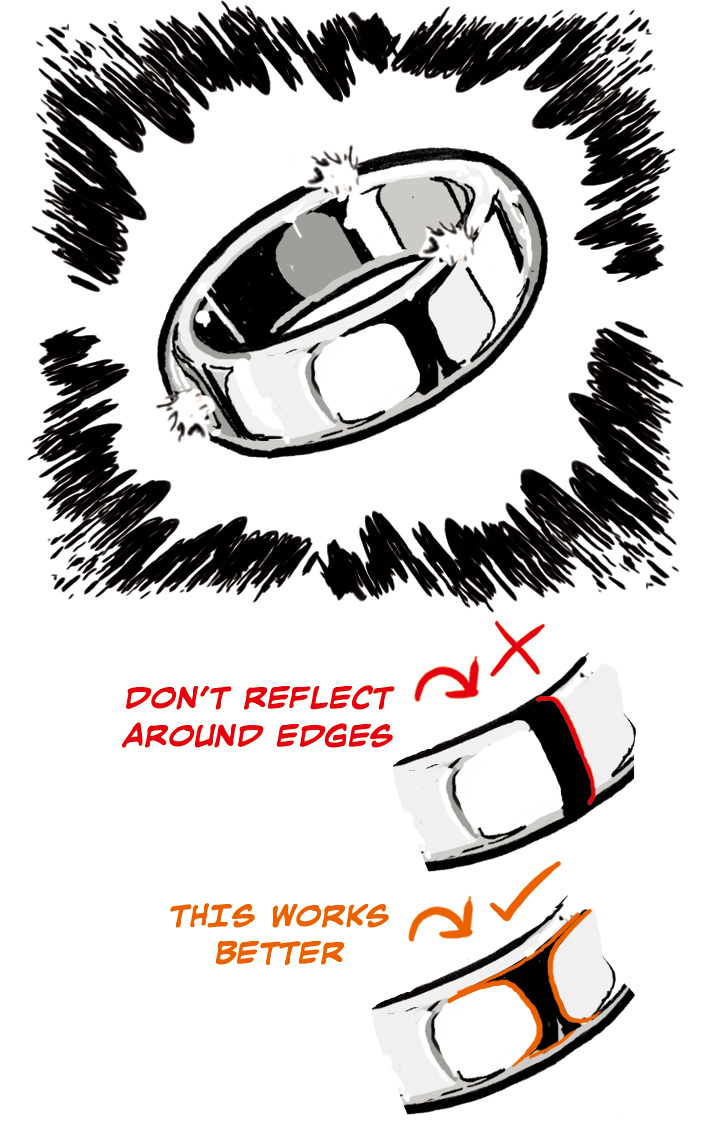
Light doesn’t reflect in the same quantity on every part of your gold objects – remember your light source, and use this to guide where you concentrate the highlights.
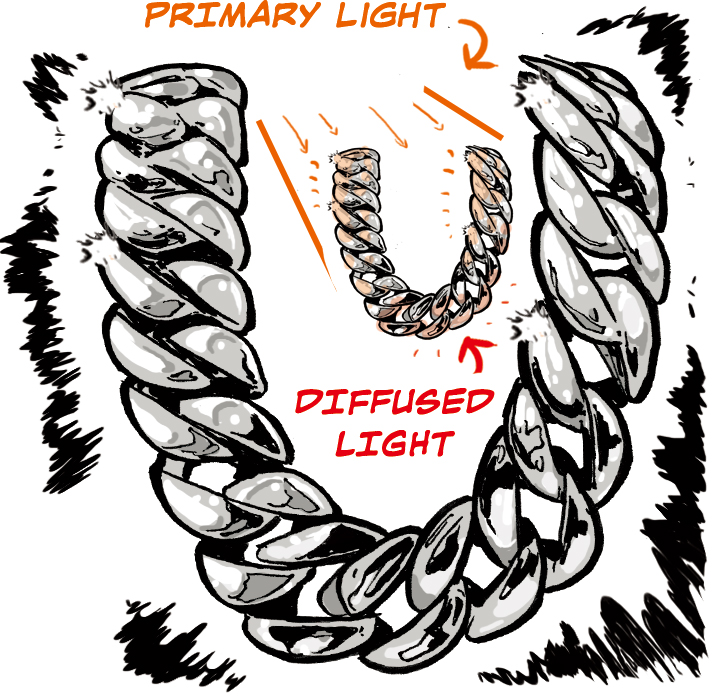
Shadows (which help describe form) tend to get lost on gold, due to the high reflectivity. Counter this by using the reflections on convex curves as cross-contours to help establish the shapes.
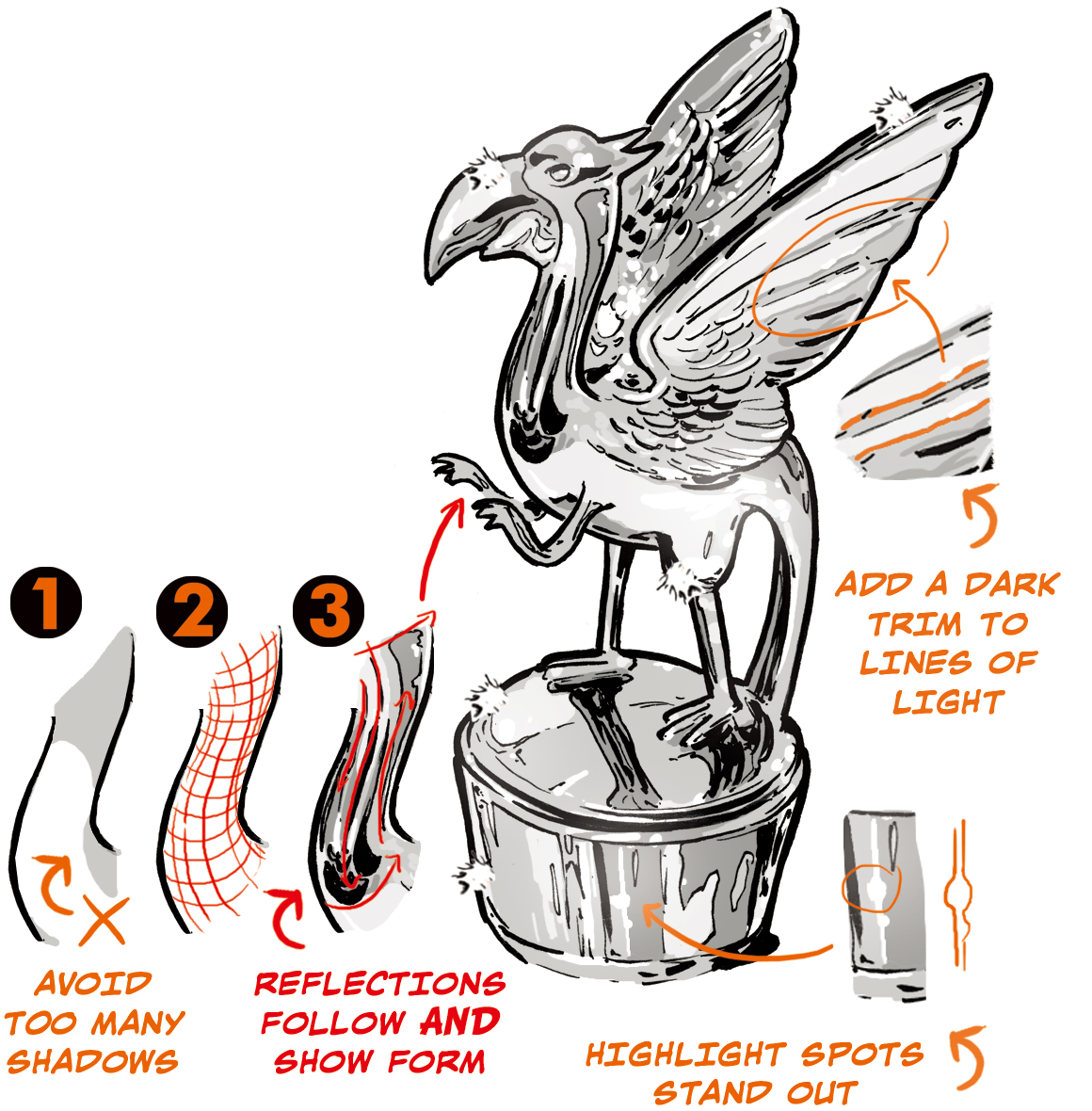
Rather than outlining interior edges, try drawing the reflection that sits on the peak of them.
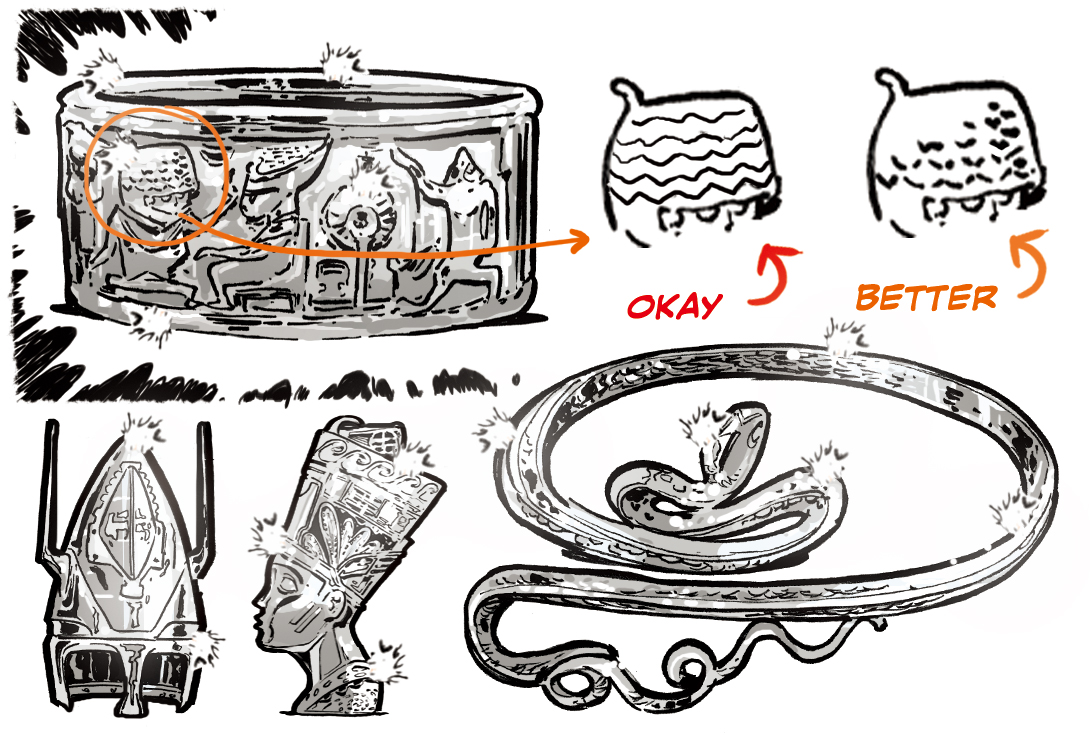
About The Etherington Brothers
The Etherington Brothers are the creators of WORLD’S MOST SUCCESSFUL ARTBOOK & UK’S MOST SUCCESSFUL BOOK of ALL-TIME on Kickstarter.
https://theetheringtonbrothers.blogspot.com/
https://www.instagram.com/etheringtonbrothers/
https://twitter.com/etheringtonbros





